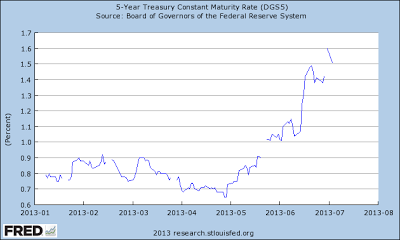Reposted from March 26, 2012
Last week China's Vice Premier Li Kequiang mentioned that reforms in China have now entered "a crucial stage and cannot be delayed." And a few days earlier Prime Minister Wen Jiabao explicitly referred to the need of a second phase of growth and talked about how "political structural reform" needed to follow economic reform. In its absence "such a historic tragedy as the Cultural Revolution may happen again." These two quotes fit nicely with an article we published three years ago about how China needed to increase the pace of reforms to eventually join the club of rich economies.
The argument that institutional quality is important for growth is not new and many have written about it, but our emphasis is on the changing relationship between institutions and growth at different stages of development. In the early phases of growth the relationship between institutions and income per capita is very weak (no need for radical reform) while it becomes very strong for higher levels of development.
We just updated our original chart with more recent data (2010) and the result is shown below (institutional quality is measured as the average of the six governance indicators produced by the World Bank; GDP per capita is adjusted for PPP).
The conclusions of our previous work remain. The chart suggests that there are two phases of growth. A first one where institutional reform is less relevant. When we look at the chart we see almost no correlation between quality of institutions and income per capita for low levels of development. To be clear, not everyone is growing in that section of the chart so it must be that there is something happening in those countries that are growing (moving to the right). Success in this region is the result of good "policies" in contrast with the deep changes in institutions that are required later (you can also call them economic reforms as opposed to institutional reforms).
The second phase of growth takes countries beyond the level of $10,000-$12,000 of income per capita. It is in this second phase when the correlation between institutions and income per capita becomes strong and positive. No rich country has weak institutions so reform becomes a requirement to continue growing.
In our original article we called this region "The Great Wall". Economies either climb the wall to become rich or they hit it and get stuck. Economies that illustrate the notion of hitting the Wall are the former Soviet Union that collapsed after not being able to "go through" the Wall with its institutional setting; or Latin American economies such as Venezuela or Argentina which have incomes around that level and do not seem to be able to take their economies to the next step.
We named that threshold "The Great Wall" as a reference to China: a country that over the last decades has displayed the highest growth of income per capita in the world with a set of institutions that are seen as weak (at least relative to advanced economies). China is once again highlighted in our updated chart above and what we can see is that, while it is still in the first phase of growth, it is getting closer and closer to the Wall. It is therefore not a surprise that in the last weeks we have heard senior officials in China talking about the challenge of the next phase of growth.
Characterizing the two phases of growth and making explicit the necessary reforms that are needed to go from one to the other is not an easy task and it is likely to lead to different policy recommendations for different countries. For a very detailed analysis of institutional reform, I strongly recommend the recent book by Daron Acemoglu and James Robinson Why Nations Fail. Their work highlights the need to develop inclusive institutions to allow for the second phase of growth (you can read their thoughts at their blog and find there a link to their book). Others have presented alternative views of how to think about the different phases of growth, as it is the case of Dani Rodrik, who emphasizes the role that different sectors play in this transition.
Antonio Fatás



